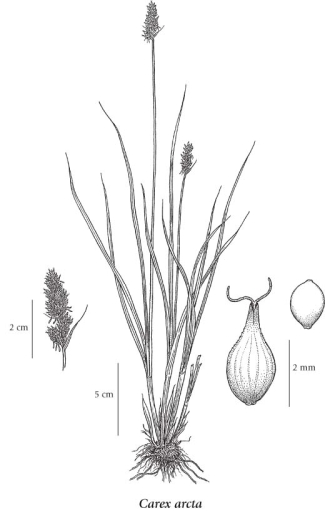Carex arcta Boott
northern clustered sedge (northern cluster sedge)
Cyperaceae (Sedge family)
Introduction to Vascular Plants
northern clustered sedge (northern cluster sedge)
Cyperaceae (Sedge family)
Introduction to Vascular Plants
